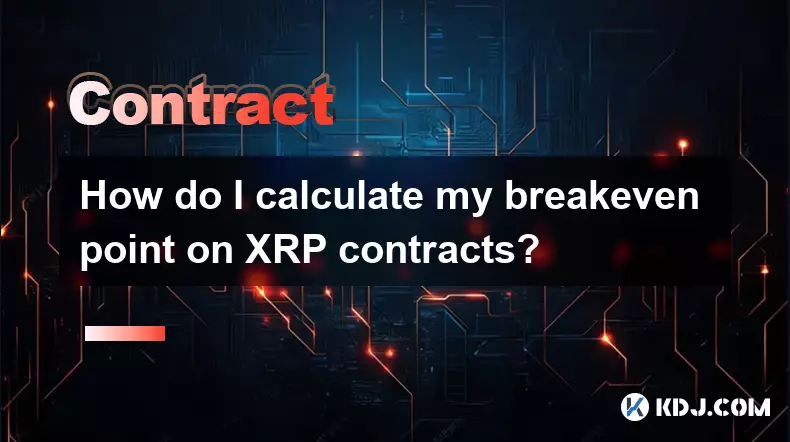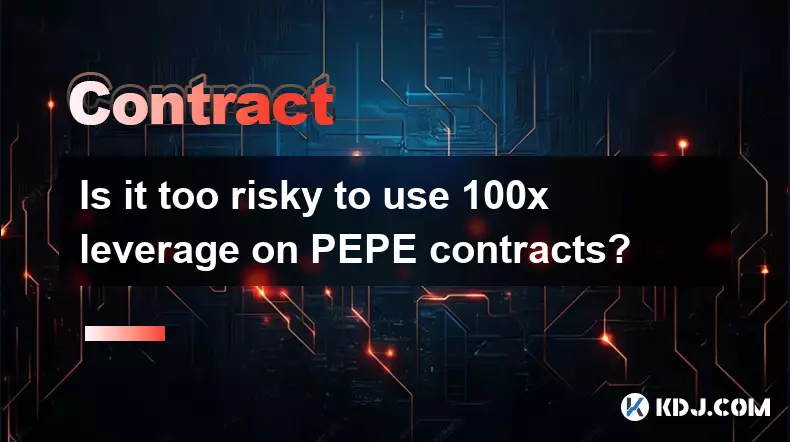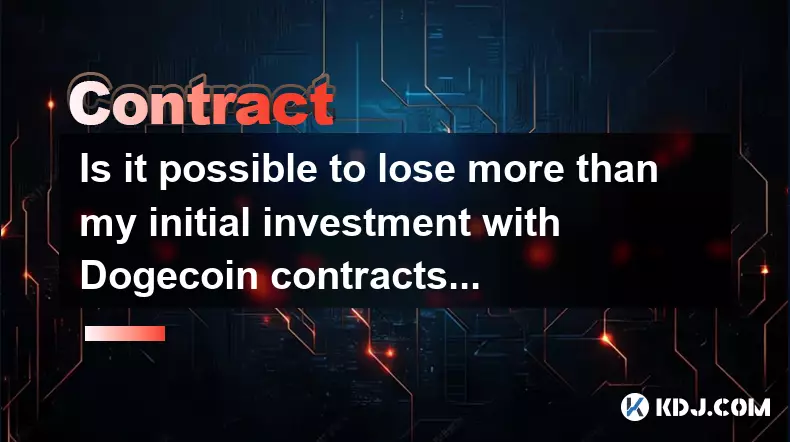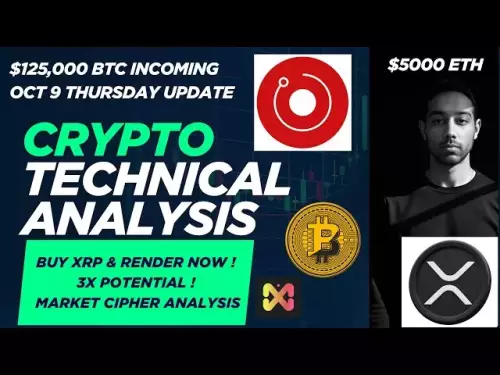-
 bitcoin
bitcoin $122659.385674 USD
0.52% -
 ethereum
ethereum $4484.113342 USD
-0.09% -
 bnb
bnb $1304.229256 USD
-0.85% -
 tether
tether $1.000204 USD
-0.03% -
 xrp
xrp $2.860636 USD
-0.51% -
 solana
solana $227.288799 USD
2.36% -
 usd-coin
usd-coin $0.999805 USD
0.01% -
 dogecoin
dogecoin $0.252837 USD
1.18% -
 tron
tron $0.341149 USD
1.12% -
 cardano
cardano $0.830507 USD
0.33% -
 hyperliquid
hyperliquid $45.792319 USD
0.04% -
 chainlink
chainlink $22.422164 USD
1.55% -
 ethena-usde
ethena-usde $1.000283 USD
0.01% -
 sui
sui $3.511389 USD
0.83% -
 stellar
stellar $0.385276 USD
-0.44%
How to Calculate Leverage and P&L in Binance Futures?
Leverage on Binance Futures amplifies both gains and risks, with higher leverage increasing liquidation risk and reducing the margin buffer against price swings.
Sep 17, 2025 at 06:54 pm

Understanding Leverage in Binance Futures
1. Leverage allows traders to control a larger position using a relatively small amount of capital, known as margin. On Binance Futures, leverage is adjustable and can range from 1x up to 125x depending on the asset and contract type. For example, with 10x leverage, a trader only needs to deposit 10% of the total position value as margin.
2. To calculate the required margin for a futures trade, use the formula: Margin = Position Size / Leverage. If you open a $10,000 BTC/USDT perpetual contract with 10x leverage, your initial margin would be $1,000. This means Binance locks $1,000 from your futures wallet to maintain the position.
3. Leverage directly impacts liquidation risk. Higher leverage increases both potential profits and losses. The liquidation price is calculated based on the entry price, leverage, fees, and maintenance margin rate set by Binance. As leverage increases, the liquidation price moves closer to the entry price, making the position more vulnerable to market volatility.
4. Traders can adjust leverage before or after opening a position through the Binance Futures interface. Changing leverage does not alter the position size but recalculates the margin ratio and affects the liquidation level. It's crucial to understand that increasing leverage after entering a trade amplifies risk exposure instantly.
Calculating Profit and Loss in Futures Trading
1. In Binance Futures, P&L (Profit and Loss) is determined by the difference between the entry and exit prices, multiplied by the position size. For a long position, P&L = (Exit Price - Entry Price) × Quantity. If you buy 1 BTC at $30,000 and sell at $32,000, your profit is $2,000 regardless of leverage used.
2. Unrealized P&L refers to gains or losses on open positions, calculated in real-time based on current market prices. Realized P&L is locked in when a position is closed. Binance displays both values separately in the futures dashboard, helping traders monitor performance without closing trades.
3. Funding fees also impact net P&L in perpetual contracts. These fees are exchanged between long and short traders every 8 hours. If you hold a long position when funding rates are positive, you pay the fee; if negative, you receive it. Over time, frequent trading or holding large positions can accumulate significant funding costs or gains.
4. Fees associated with trading—such as taker and maker fees—affect final profitability. Binance charges a small percentage on each executed order. These must be subtracted from gross P&L to determine net returns. High-frequency strategies especially need to account for these deductions to remain profitable.
Risk Management and Margin Mechanics
1. Maintenance margin is the minimum amount required to keep a position open. Binance sets this rate per contract, typically between 0.5% and 2.5%. If your equity falls below this threshold due to adverse price movement, liquidation is triggered. Understanding this helps in selecting appropriate leverage levels.
2. Cross margin and isolated margin modes influence how leverage and margin are applied. In isolated mode, margin is fixed and limited to the allocated amount. In cross mode, all available balance in the futures wallet supports open positions, potentially preventing premature liquidation during temporary drawdowns.
3. Auto-deleveraging is a mechanism Binance uses as a last resort when insurance funds are insufficient after liquidation. Though rare, traders should know that highly leveraged losing positions may be forcibly closed at market rates during extreme volatility, sometimes resulting in worse-than-expected outcomes.
4. Monitoring your margin ratio is essential. This ratio equals unrealized loss divided by wallet balance. When it reaches 100%, liquidation occurs. Keeping this ratio well below the threshold ensures breathing room against market swings, especially in high-leverage scenarios.
Frequently Asked Questions
How is liquidation price calculated on Binance Futures?The liquidation price depends on the position side, entry price, leverage, and maintenance margin. For a long position, it’s approximately: Entry Price × (1 - Initial Margin Rate / (1 - Maintenance Margin Rate)). Binance provides a live liquidation price on the trading interface.
Does changing leverage affect an open position’s P&L?No, adjusting leverage doesn’t change the position size or entry price, so unrealized P&L remains unaffected. However, it alters the margin usage and shifts the liquidation price, impacting risk exposure.
Can I incur debt trading futures on Binance?No. Binance operates a clawback protection system. If a position is liquidated and results in negative equity, the platform covers the loss. Users cannot owe money beyond their initial margin.
What happens when a futures position gets liquidated?Binance automatically closes the position at the best available market price. The remaining margin, if any, is returned to the wallet after deducting fees. Insurance funds absorb extreme losses, preventing liability to the user.
Disclaimer:info@kdj.com
The information provided is not trading advice. kdj.com does not assume any responsibility for any investments made based on the information provided in this article. Cryptocurrencies are highly volatile and it is highly recommended that you invest with caution after thorough research!
If you believe that the content used on this website infringes your copyright, please contact us immediately (info@kdj.com) and we will delete it promptly.
- Fan Tokens, Serie A, and Collapses: A New Era or a False Start?
- 2025-10-09 22:25:15
- MoonBull Presale Heats Up Amid ASTER & WLFI Market Moves: The 100x Crypto Opportunity?
- 2025-10-09 22:45:16
- Unlocking the Secrets: Royal Mint Coins and the Stories They Tell
- 2025-10-09 22:45:16
- Pepe, Cryptocurrency, and Mining: Riding the Meme Wave to Passive Income
- 2025-10-09 23:05:15
- Strategy, Fixed Income, Changes: Navigating the Evolving Digital Asset Landscape
- 2025-10-09 22:50:12
- LEGO Batman 2026: A Legendary Batmobile Collection is Coming!
- 2025-10-09 22:25:15
Related knowledge

How to calculate the ROI for Ethereum contracts?
Oct 09,2025 at 04:36pm
Understanding Ethereum Contract ROI Basics1. Return on Investment (ROI) for Ethereum contracts begins with tracking the initial capital deployed into ...

How do I calculate my breakeven point on XRP contracts?
Oct 09,2025 at 08:36pm
Understanding the Breakeven Point in XRP Futures TradingCalculating the breakeven point for XRP contracts is essential for traders who engage in futur...

What are the settlement procedures for XRP contracts?
Oct 09,2025 at 04:01pm
Understanding XRP Futures and Derivative Contracts1. XRP derivative contracts are typically offered by cryptocurrency exchanges that support margin tr...

How to reduce trading fees for Bitcoin contracts?
Oct 09,2025 at 02:37pm
Understanding Bitcoin Contract Trading Fees1. Trading fees on Bitcoin contracts are typically charged by exchanges for executing buy and sell orders. ...

Is it too risky to use 100x leverage on PEPE contracts?
Oct 09,2025 at 04:18pm
Understanding 100x Leverage in PEPE Contracts1. Trading PEPE contracts with 100x leverage allows traders to control a much larger position using a sma...

Is it possible to lose more than my initial investment with Dogecoin contracts?
Oct 09,2025 at 02:00pm
Understanding the Risks of Dogecoin Futures Trading1. Trading Dogecoin futures contracts introduces financial exposure that extends beyond the origina...

How to calculate the ROI for Ethereum contracts?
Oct 09,2025 at 04:36pm
Understanding Ethereum Contract ROI Basics1. Return on Investment (ROI) for Ethereum contracts begins with tracking the initial capital deployed into ...

How do I calculate my breakeven point on XRP contracts?
Oct 09,2025 at 08:36pm
Understanding the Breakeven Point in XRP Futures TradingCalculating the breakeven point for XRP contracts is essential for traders who engage in futur...

What are the settlement procedures for XRP contracts?
Oct 09,2025 at 04:01pm
Understanding XRP Futures and Derivative Contracts1. XRP derivative contracts are typically offered by cryptocurrency exchanges that support margin tr...

How to reduce trading fees for Bitcoin contracts?
Oct 09,2025 at 02:37pm
Understanding Bitcoin Contract Trading Fees1. Trading fees on Bitcoin contracts are typically charged by exchanges for executing buy and sell orders. ...

Is it too risky to use 100x leverage on PEPE contracts?
Oct 09,2025 at 04:18pm
Understanding 100x Leverage in PEPE Contracts1. Trading PEPE contracts with 100x leverage allows traders to control a much larger position using a sma...

Is it possible to lose more than my initial investment with Dogecoin contracts?
Oct 09,2025 at 02:00pm
Understanding the Risks of Dogecoin Futures Trading1. Trading Dogecoin futures contracts introduces financial exposure that extends beyond the origina...
See all articles


























![🚨IS VECHAIN (VET) A DEAD COIN ?? PRICE ANALYSIS [GET READY NOW] 🚨IS VECHAIN (VET) A DEAD COIN ?? PRICE ANALYSIS [GET READY NOW]](/uploads/2025/10/09/cryptocurrencies-news/videos/vechain-vet-dead-coin-price-analysis-ready/68e7b200b067b_image_500_375.webp)















































